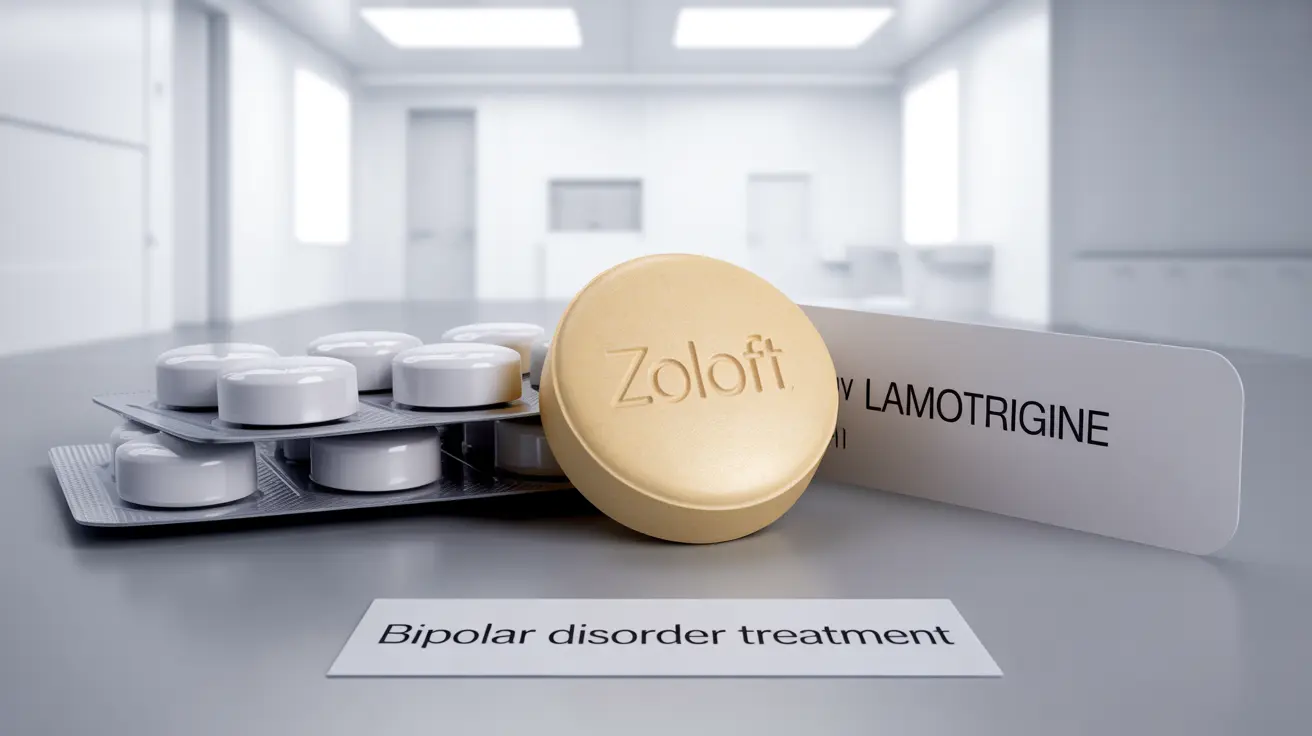When managing bipolar disorder, healthcare providers may consider prescribing Zoloft (sertraline) as part of a comprehensive treatment plan. However, using this antidepressant requires careful consideration and monitoring, as it can affect people with bipolar disorder differently than those with depression alone.
Understanding the role of Zoloft in bipolar disorder treatment, including its benefits, risks, and proper usage guidelines, is crucial for both patients and healthcare providers. This article explores the complex relationship between Zoloft and bipolar disorder management.
The Role of Zoloft in Bipolar Disorder Treatment
Zoloft belongs to a class of medications called selective serotonin reuptake inhibitors (SSRIs). While primarily used for depression and anxiety, its use in bipolar disorder requires special considerations. Healthcare providers typically prescribe Zoloft alongside mood stabilizers to help manage the depressive episodes of bipolar disorder while minimizing the risk of triggering mania.
Why Mood Stabilizers Are Essential
Mood stabilizers play a crucial role when using Zoloft for bipolar disorder. These medications help prevent manic episodes that antidepressants alone might trigger. Common mood stabilizers used alongside Zoloft include lithium, valproate, or lamotrigine.
Safety Considerations and Risk Management
Taking Zoloft for bipolar disorder requires careful monitoring and adherence to safety protocols. Healthcare providers typically start with lower doses and gradually increase them while watching for signs of mania or other adverse effects.
Common Side Effects to Monitor
When taking Zoloft for bipolar depression, patients may experience various side effects, including:
- Nausea or digestive issues
- Sleep changes
- Headaches
- Sexual side effects
- Anxiety or restlessness
- Changes in appetite
Warning Signs of Mania
Patients and healthcare providers should watch for early signs of mania, such as:
- Decreased need for sleep
- Increased energy or agitation
- Racing thoughts
- Impulsive behavior
- Elevated mood
- Rapid speech
Treatment Monitoring and Management
Regular monitoring is essential when using Zoloft for bipolar disorder. Healthcare providers typically schedule frequent check-ups during the initial weeks of treatment to assess medication effectiveness and watch for adverse effects.
Treatment Success Indicators
Positive response to treatment may include:
- Improved mood stability
- Better sleep patterns
- Reduced depressive symptoms
- Enhanced daily functioning
- Minimal side effects
- No signs of mania
Frequently Asked Questions
Can Zoloft be safely used to treat depression in people with bipolar disorder? Yes, Zoloft can be safely used in bipolar disorder when prescribed alongside mood stabilizers and with careful monitoring by a healthcare provider. The key is proper medication management and regular check-ups to ensure safety and effectiveness.
Why is Zoloft usually prescribed along with mood stabilizers for bipolar disorder? Mood stabilizers are essential companions to Zoloft because they help prevent the risk of manic episodes that antidepressants alone might trigger. This combination helps manage depressive symptoms while maintaining overall mood stability.
What are the risks of taking Zoloft without a mood stabilizer if I have bipolar disorder? Taking Zoloft without a mood stabilizer can significantly increase the risk of triggering manic episodes in bipolar patients. This could lead to rapid cycling between mood states and potentially worsen the overall course of the illness.
What common side effects should I expect when taking Zoloft for bipolar depression? Common side effects may include nausea, sleep changes, headaches, sexual side effects, and changes in appetite. These effects often improve with time, but any concerning symptoms should be reported to your healthcare provider.
How should Zoloft treatment be monitored to avoid triggering manic episodes in bipolar patients? Treatment should be closely monitored through regular check-ups, especially during the first few weeks. Healthcare providers will assess for signs of mania, adjust dosages as needed, and evaluate the overall effectiveness of the treatment combination.
Understanding the proper use of Zoloft in bipolar disorder treatment is crucial for successful outcomes. Always work closely with your healthcare provider to ensure safe and effective medication management.




